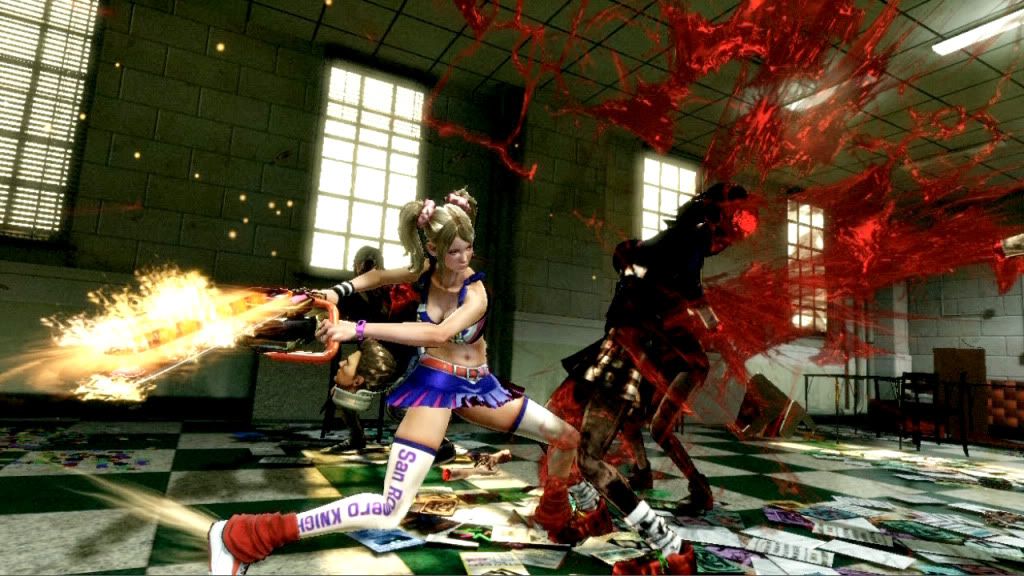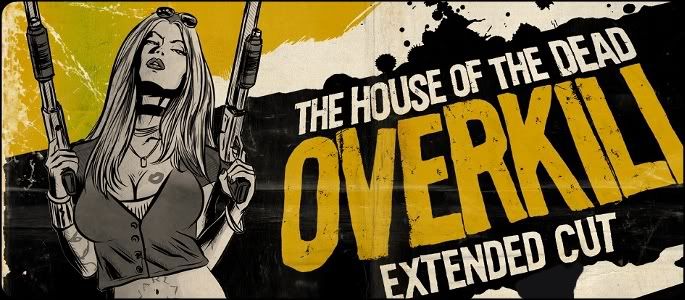This post has not been edited by the GamesBeat staff. Opinions by GamesBeat community writers do not necessarily reflect those of the staff.

Since the release of the Quintin Tarantino/Robert Rodriguez double feature Grindhouse, the titular genre of the same name has gone from being almost completely forgotten to mainstream media awareness. Grindhouse sparked a brief resurgence of exploitation cinema, but nowhere has the effect of that style been felt more heavily than in the world of video games.
And perhaps in a medium that is struggling to gain acceptance as an art form, grindhouse games are just what we need.
As cinema goes, grindhouse is incredibly niche. The genre of exploitation films arose in the '70s as the popularity of TV and home video began to wear away the market for small theaters. These single-screen businesses started showing movies with gratuitous sex and violence that couldn’t be found anywhere else. The appeal of a grindhouse video game serves the same purpose.
The grindhouse influence has been seen in games like Wet, House of the Dead: Overkill, Madworld, and almost the entire body of work of legendary game designer Suda 51, whose work includes No More Heroes, Killer7, Shadows of the Damned, and most recently with Lollipop Chainsaw. Even the non-sequel followup to Alan Wake, Alan Wake's American Nightmare, is purported to contain homages to grindhouse. While still somewhat obscure, grindhouse is definitely gaining traction in the world of gaming. And it seems that maybe the genre was a perfect fit all along.
Smaller budget developers know they can’t compete with the triple-A cash cows pumped out by big-name game studios. Wet isn’t going to upstage Tomb Raider or Uncharted as a third-person shooter. So, they instead play up their stylistic strengths, embracing the hyper-violent presentation of grindhouse and running with it. Wet is at its best when the music and art direction enhance its gunplay. House of the Dead: Overkill knows that the light gun shooter has been done a hundred times before, so it focuses on filthy dialogue and intentionally incongruous editing for humorous effect.

The video game industry already puts a huge emphasis on sex and violence. One glance at a few of the protagonists for mainstream games proves this. The men are primarily abrasively macho muscleheads with biceps the size of barrels who carry around chainsaws or assault rifles or some combination thereof. The women are often petite, busty warriors who wear revealing and impractical armor while still kicking copious amounts of ass. The jump from a mainstream game to a grindhouse-themed game is not a great leap.
Does the existence of such games bring down an argument for them as art? Is their over-the-top nature perpetuating the stereotype of gamers as maladjusted deviants as cable news networks like to point out?
Frankly, these games are still invisible in the eyes of most gamers, so they’re not going to have a great impact on public consciousness — whatever the answer is. But if they do anything, they make us look with a more critical eye at the bloody, sexy world of gaming…while at the same time appealing to people’s more base interests. It’s complicated. But it’s hard to see a man impaled on a giant dart board, head exploding as he makes impact, as in Madworld, and not laugh at the absurdity of it.
If you consider both gaming and movies as growing art forms, then grindhouse is the period of rebellious adolescence. While films were seen as art and began branching out into new, experimental places, grindhouse appealed to viewers' interests to simply see cool stuff happen. Gaming is really at the same point on its path to maturity.
As far as we get in arguing for games as art, then these gritty games aren’t just essential to the development of games as media, they’re a specific form of artistic expression. For all its blood spray and language, if you look at a game like No More Heroes as a sum of its parts, it's impossible to see it as anything but art.
This article was originally posted on grouvee.com.
